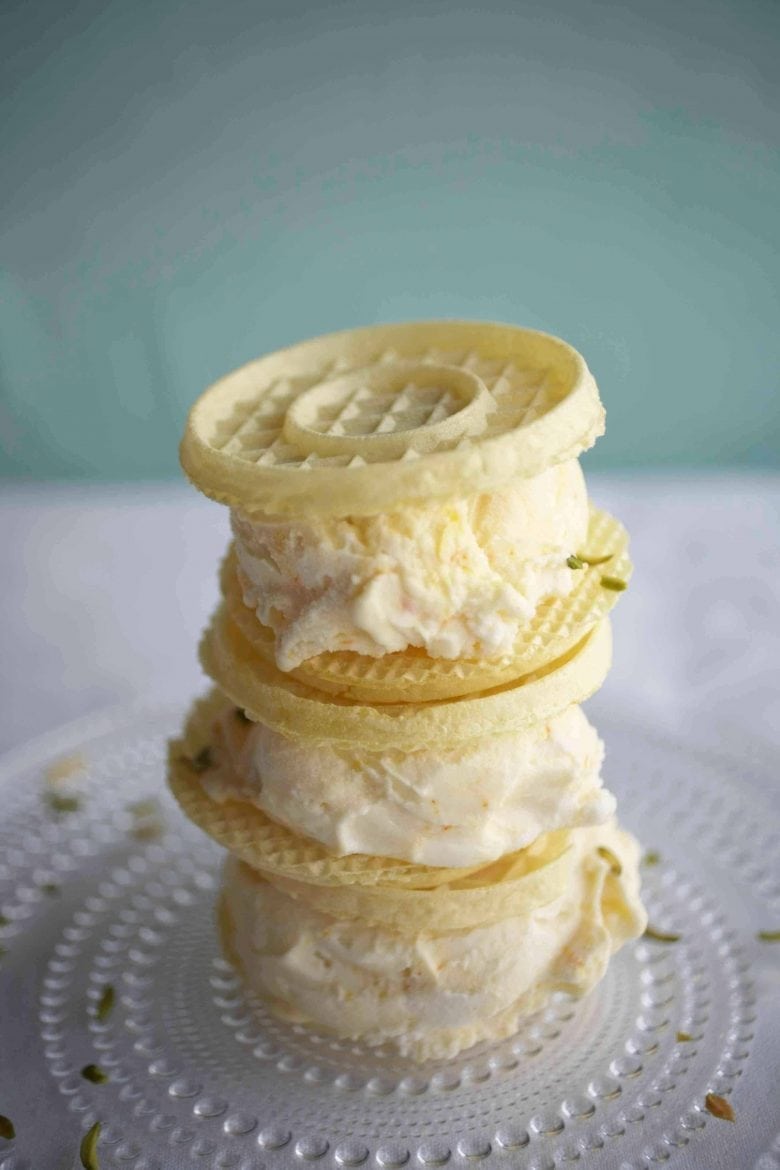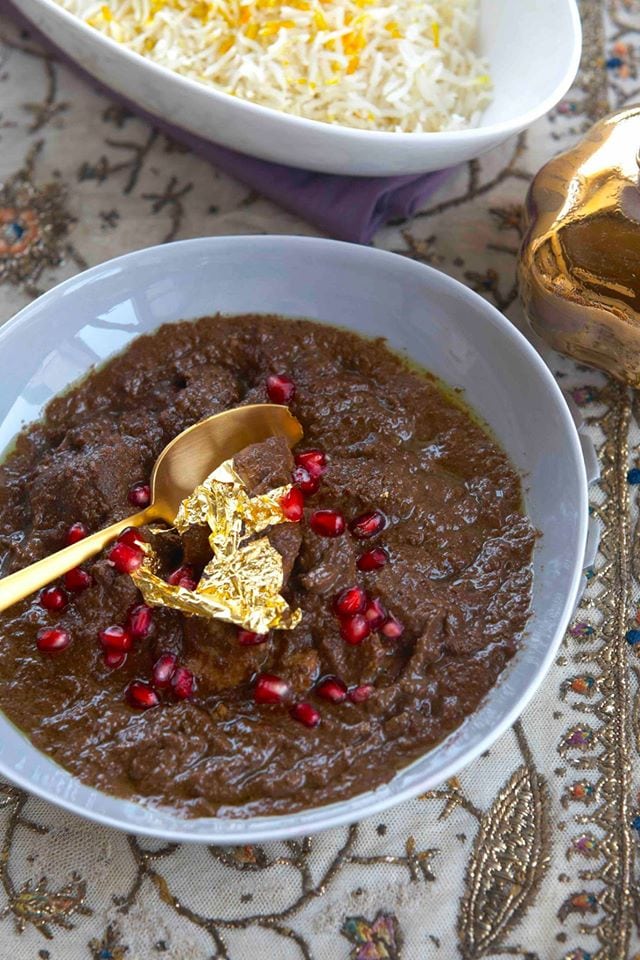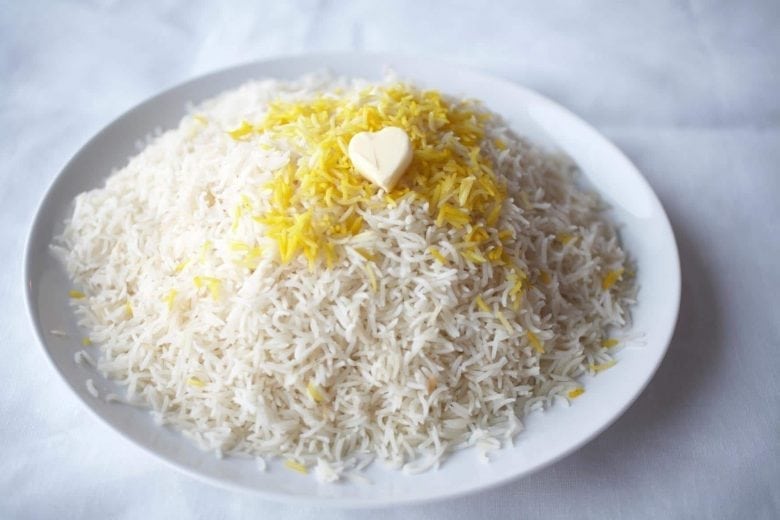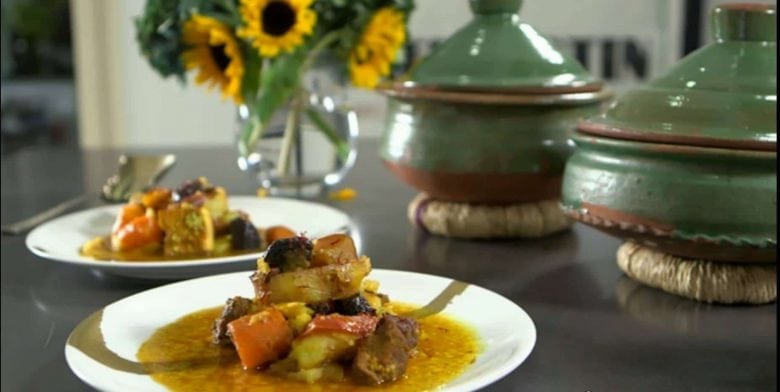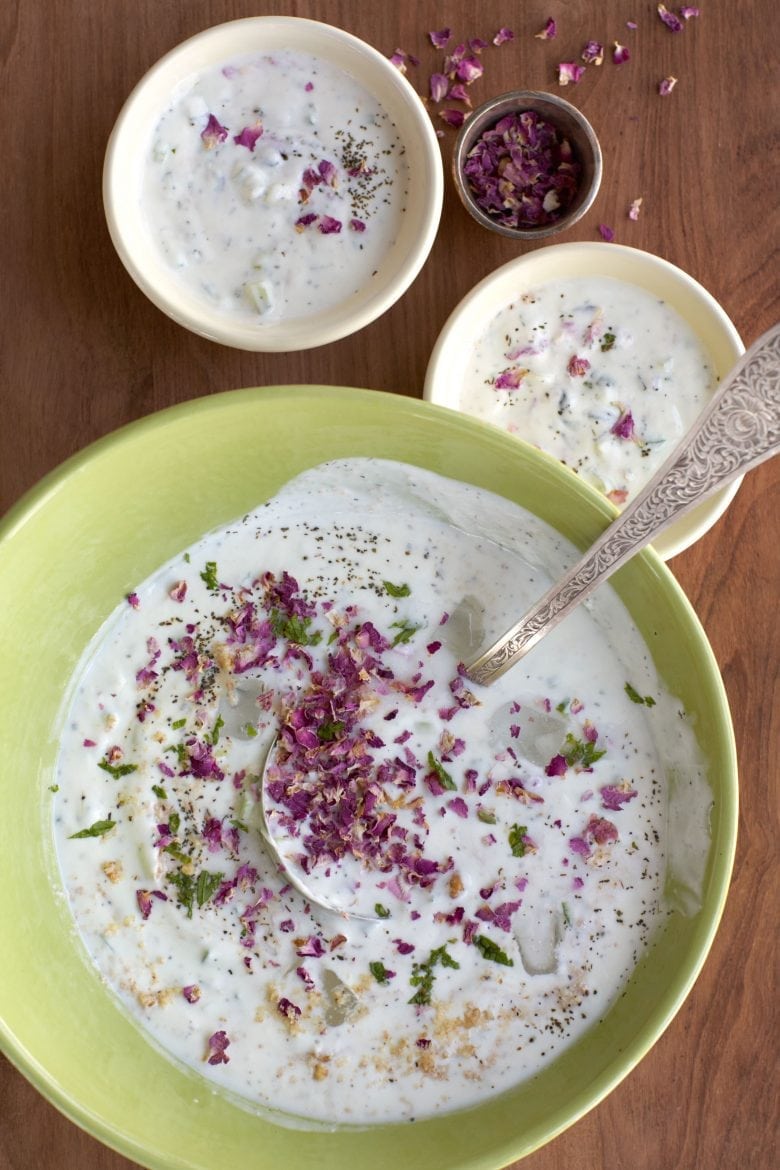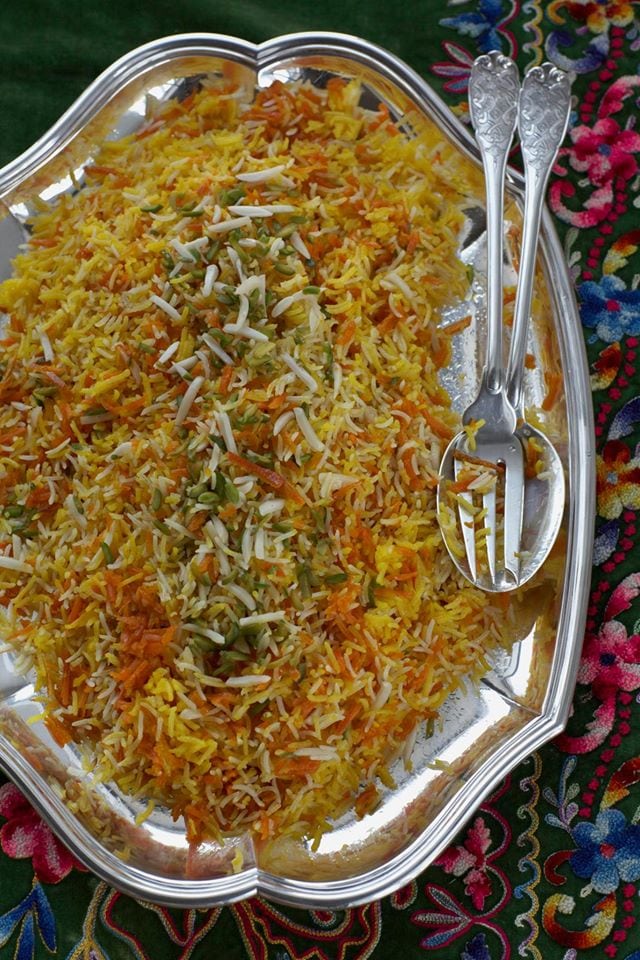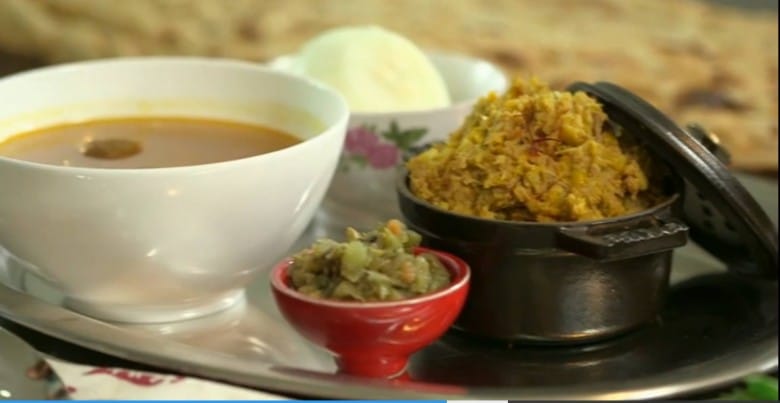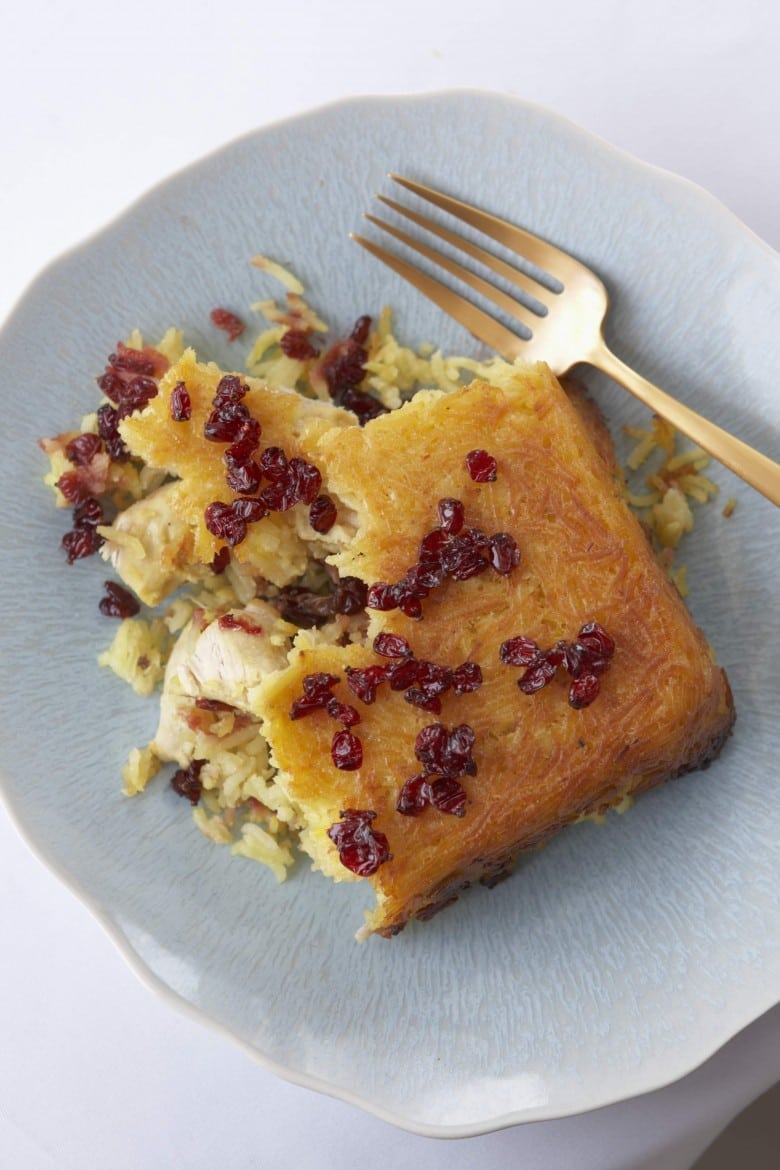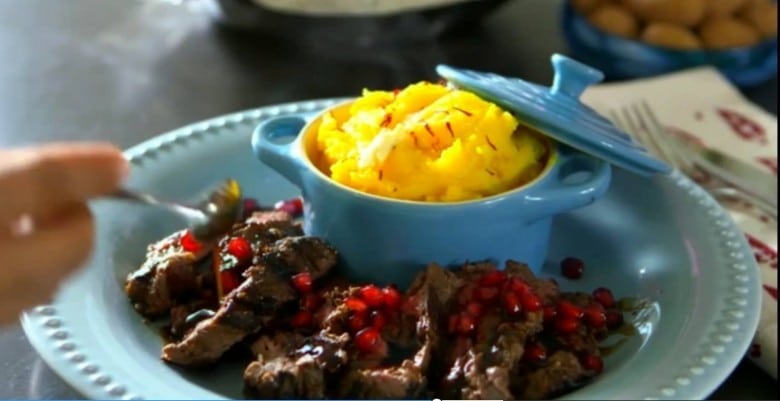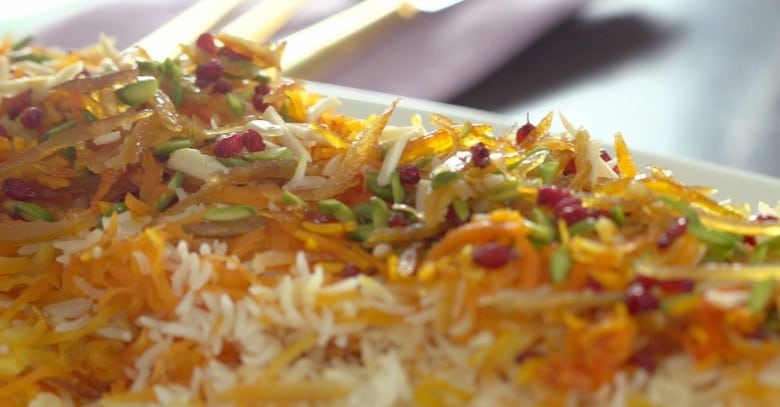BASTANIYEH AKBAR MASHTI MY WILD ORCHID ICE CREAM
Akbar Mashti was an enterprising young man who created this recipe back in the 1920s. It’s a blend of crunchy pistachios, heady rose water and fragrant saffron. The texture is stretchier than regular ice cream, because the powdered root of wild orchid (Orchis mascula) or salep is used in the custard. Salep is sold in packets in Middle Eastern shops.
In Iran, the ice cream is scooped in between two delicate, almost transparent, rice wafers – like a sandwich. As a child, I remember biting into these cold fragrant discs, eagerly searching for pieces of pistachio and chunks of frozen cream. That’s why I’ve made sure you’ll find an extra helping of them in my recipe.
Ingredients
250ml (8fl oz) 1 cup of whole milk
125g (4oz) ½ cup of sugar
6 small organic egg yolks
2 tsp salep powder
Tiny pinch of saffron threads, pounded then dissolved in 1 tbsp. hot water
½ tsp rose water
250g (8oz) 1 cup double cream
3 tbsp. icing sugar
3 tbsp. slivered pistachios
Place the milk and 1 tsp of the sugar in a saucepan and heat, but try not to let it come to the boil. The sugar will stop the milk from boiling over. Remove from the heat and cool slightly.
Prepare a medium bowl and fine-meshed sieve for the finished crème anglaise, along with a large bowl filled with ice.
Whisk the yolks and rest of the sugar until just mixed then pour the hot milk on them in three stages, so that the eggs can get used to the heat and won’t curdle.
Pour the mixture back in the pan. Place over a medium-low heat and stir continuously with a wooden spoon until pale and creamy – about 4-5 minutes. Don’t allow it to come to the boil or the mixture will curdle. Once you see a lot of steam rising, around 82 °C/180°F if you’re using a thermometer, take the pan off the heat. Or take the spoon out of the pan and draw your finger over the back of it: if it leaves an impression that does not run, the custard is ready.
Add the salep powder, saffron liquid and rose water and whisk vigorously for w few seconds so that there are no lumps and the mixture takes on a lovely saffron hue. Remove from the heat. Strain the custard through the sieve and into the bowl you have ready . Stand the bowl of custard over the ice bath and stir occasionally until it has cooled. Mix the double cream with the icing sugar. Pour into a 20cm (8in) tray or container and freeze it.
Pout the custard into an ice-cream maker. While it is running, break the frozen cream into 1 cm (½ in) chunks. Once the custard is frozen, fold in the chunks and the slivered pistachios, then freeze for a couple of hours before serving.

